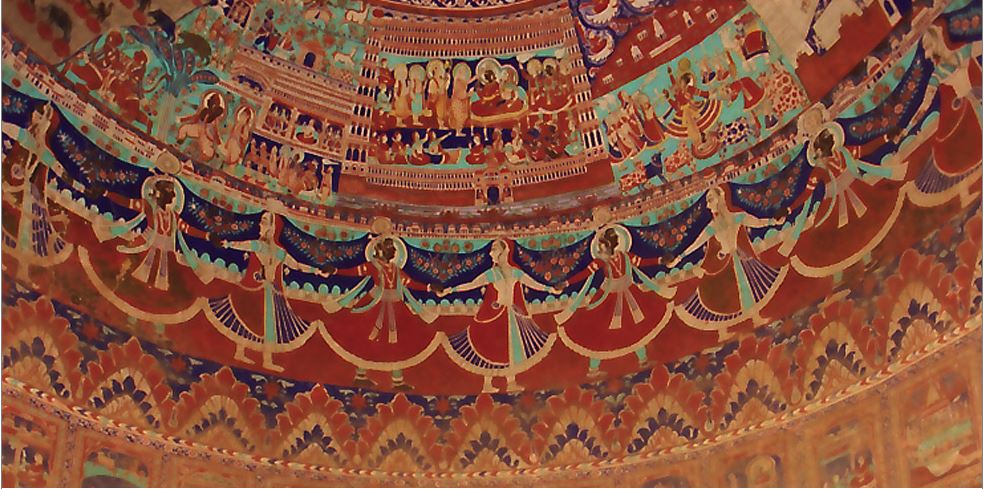
Ilay’s Shekhawati work led to scholarships (1989-90) from INTACH/UK and The Society for South Asian Studies. These funded mural research elsewhere in India. The Charles Wallace (Pakistan) Trust granted him scholarships (1991-92 and 1992-93) to examine wall paintings in Pakistan. Here, he identified important Jahangir-period (1605-27) figurative murals in Lahore (see Publications and Photographs). He continues to take an interest in subcontinental wall paintings.
India is rich in prehistoric rock art and traces of paintwork remain on ancient subcontinental Buddhist structures. Fine Buddhist figurative murals also survive in 5-7th century cave monasteries, and Buddhist painting of a different genre decorates buildings in Ladakh and Himachal Pradesh. Tibetan-style murals, common throughout Ladakh, are still painted. Although they probably decorated many ancient Hindu or Jain buildings, in the North India plains few pre 17th century wall paintings survive. They have succumbed to age and iconoclasm.
The Mughal dynasty revived the art of figurative mural painting, introducing Persian and European post-renaissance elements to the native genre. Traces of murals remain from Akbar’s reign (1556-1605) at Fatehpur Sikri. His heir, Jahangir, ordered fine figurative murals, now neglected in Lahore Fort (Pakistan) and Rambagh (Agra, India). His more-orthodox son, Shah Jahan, confined murals to plant and geometric designs.
Aurangzeb, severely orthodox in his interpretation of Islam, defaced and destroyed figurative work commissioned by his ancestors. Murals are still emerging from his whitewash, which has protected their brightness, making the destructive emperor an early conservator!
Most Rajput rulers, both in Rajasthan and the Hill States, commissioned murals which were influenced by Mughal work. The oldest examples are in Amber, but the genre soon spread to other Rajasthani princely capitals, each developing its own style. Merchants took on the idiom, leading to an explosion of colour in Shekhawati.
An account of Indian mural painting history and techniques is found in Ilay’s The Painted Towns of Shekhawati 2017 Prakash Books, New Delhi.
[ To view more writing on this subject please see PUBLICATIONS & PHOTOGRAPHY ]
